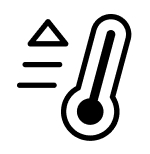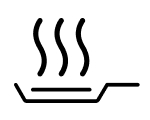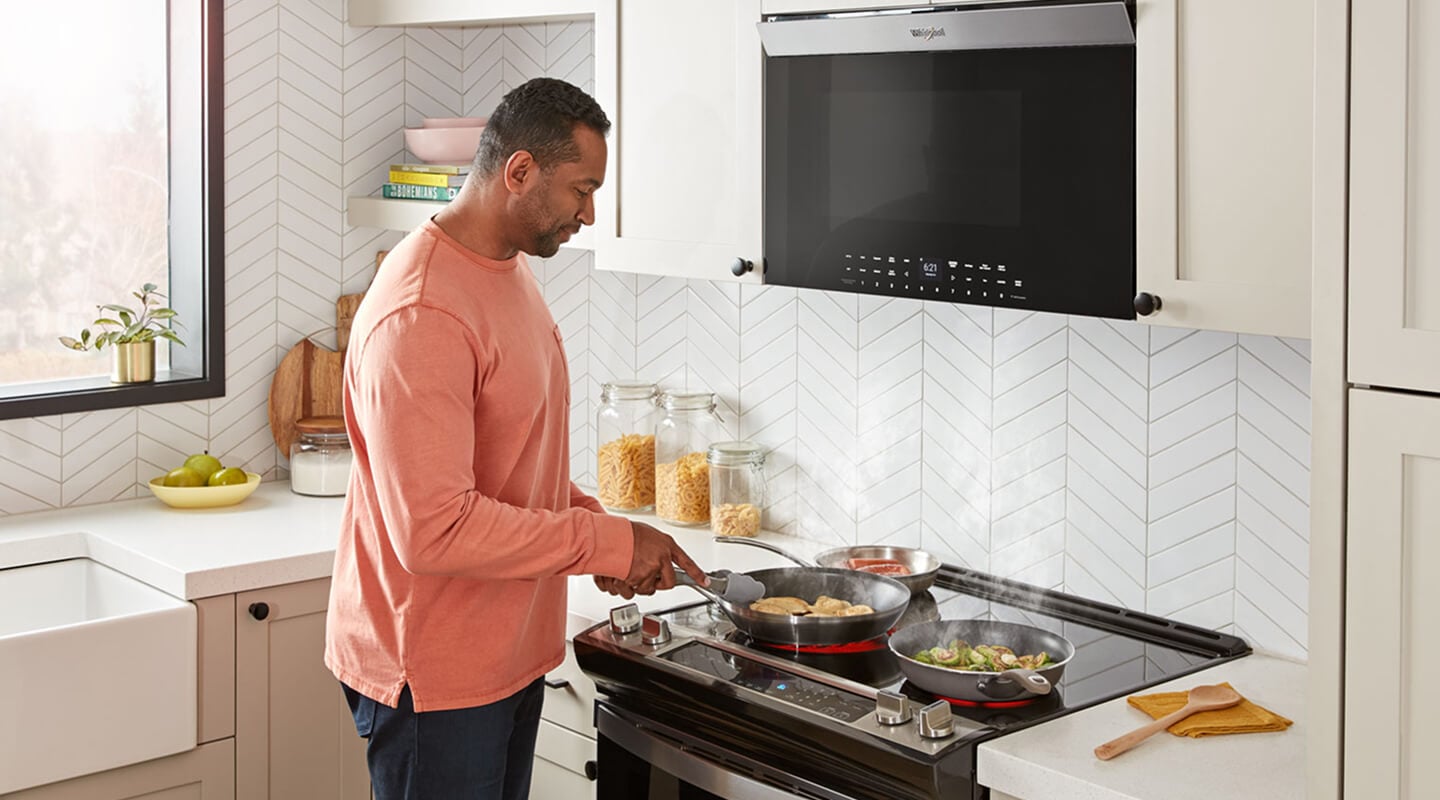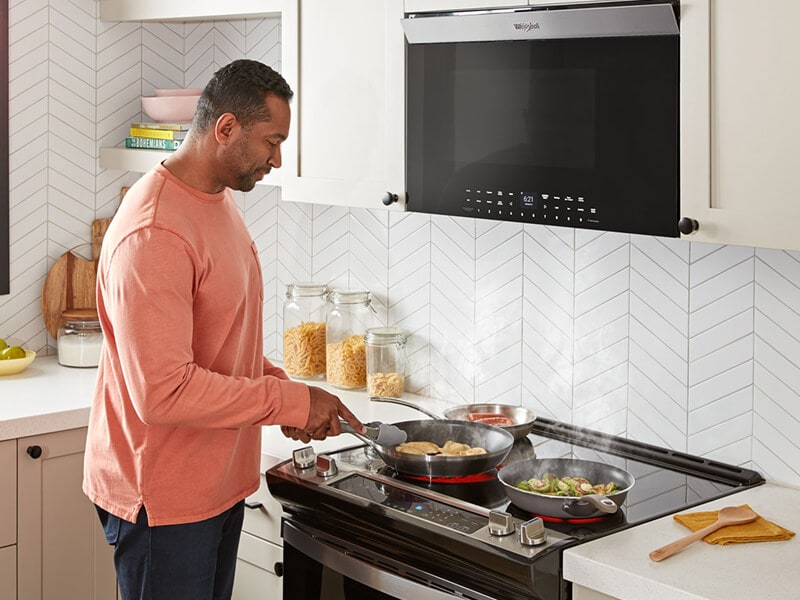
What is sautéing?
Sautéing is a cooking method that cooks food quickly over high heat, using a small amount of fat. The general results—especially with vegetables—are a golden brown color, slightly crispy exterior and tender interior.
Whether you’re planning a busy weeknight dinner or meal prepping for your family, sautéing can be a quick and easy way to add flavor to a meal. Similar to steaming, blanching, air frying or grilling, sautéing food on your stovetop has its own technique. Read on to learn how to sauté and get tips for sautéing vegetables.
How to sauté: the basics
Vegetables are one of the most common foods that can be sauteéd. Simply add a small amount of fat, like olive oil, to a pan and quickly cook your food over medium-high heat. Make sure to cut veggies in similar-sized pieces and add them to your pan in one layer so they cook as evenly as possible.
As your ingredients cook, you can stir or gently shake the pan to help brown ingredients to a crisp, yet tender texture. Sautéing vegetables can help you put a delicious side dish on the table quickly. Learn more simple tips to help streamline meal prep.

Whirlpool® Cooktops
A cooktop for every kitchen
Shop Whirlpool® Gas and Electric Cooktops and choose the best option for your family’s cooking needs
Sautéed onions recipe
Sautéing onions can be an easy way to add additional flavor to your favorite recipes. Top them on burgers, sandwiches, tacos or flatbread. Use them with meats like steak, chicken or pork, or add them to a creamy dip. And unlike caramelizing, the process is much shorter. Read on for a simple sautéed onion recipe that can be prepared in minutes.
Yields
- 1 serving
Tools
Sauté pan or frying pan
Knife
Cutting board
Wooden spoon or heat-proof spatula
- Stovetop or cooktop, like these options from Whirlpool brand
Ingredients
Onion
- Olive oil, cooking oil or butter
Prep time
- 5 minutes
Cook time
- 5 minutes
Total time
- 10 minutes

1. Chop or slice the onion
Prepare your onion by chopping or slicing it into uniform-sized pieces. This helps sauté the pieces evenly.

2. Preheat the pan
Heat a small amount of oil or butter in the pan on medium-high heat until it’s hot. A flat-bottomed, wide sauté pan or frying pan is ideal so the onions can be placed in a single layer. For a nonstick pan, you can use butter or a small amount of water or vegetable broth.

3. Sauté the onions
Add the onions in an even layer on the bottom of the pan. Stir or gently shake the onions as they cook. The longer you sauté the onions, the deeper and sweeter the flavor. Simply cook longer to caramelize your onions. You can tell if they are carmelized when they turn a deep, golden brown. Truly caramelized onions take at least 45 minutes to cook.

4. Add onions to your recipe
Remove your onions from the heat. Keep in mind that the onions will continue to cook a bit once you take them off the heat. Add them to your favorite recipes.
Shop Whirlpool® Cooktops
No matter your style or fuel source, Whirlpool brand offers cooktop options for any kitchen. Browse Whirlpool® gas, electric and induction models to find the cooktop that works best for you and your family.
Tips for sautéing vegetables:
Here are a few simple tips to help when sautéing vegetables.
Ensure vegetables are cleaned and dried properly before adding them to the pan.
Cut or chop vegetables into roughly matching-sized pieces for more even cooking.
Cook times may vary depending on the size and type of vegetables.
Use a large enough pan that your ingredients can line the bottom in one even layer.
Look for a tender-crisp texture to know when your veggies are done cooking. Tender-crisp texture means the vegetable is cooked all the way through but still has crunch or bite to it.
Remove your pan from the heat after you’re done cooking, and be aware that vegetables continue to cook for a bit in the hot pan, even off the heat.
Use butter for a rich, nutty flavor, but turn the heat down to medium, as it has a lower smoke point than many oils.
Season sautéed vegetables with desired spices when they are just about done cooking.

Whirlpool® Gas Ranges
Get dinner on the table with ease
Whether you’re baking a casserole or roasting your family’s favorite chicken recipe, a Whirlpool® Gas Range offers convenient features to help you at mealtime
Should you sauté garlic or onions first?
Sauté onions first, because garlic burns at a lower temperature and cooks more quickly. When you add the garlic to the onions, turn the heat down on your stovetop and keep an eye on your garlic. If the garlic burns, it can have a bitter taste.
Should you sauté with butter or oil?
Since sautéing calls for medium-high temps, use oils with high smoke points, like olive, vegetable, sunflower, safflower, canola or refined coconut oil.
Butter has a lower smoke point, so if you choose to use it to sauté, consider lowering the temperature to medium or blend it with oil to help withstand higher temps.


What is the best temperature for sautéing?
Use medium-high heat on your stovetop for sautéing vegetables. You may find that the temperature is around 350°F (177°C). The higher temps can help the vegetables quickly reach a crisp, yet tender texture. Foods caramelize at this temperature too, which is key for flavor development. If you live at a higher altitude, you may need to adjust your stovetop setting.
Explore Whirlpool® Gas Ranges
Whirlpool® Gas Ranges come with convenient features that can help create healthy and flavorful meals. Select models have EZ-2-Lift™ Hinged Cast-Iron Grates which give you quick access to spills on the cooktop with a hinged design that lets you wipe up underneath without removing them and SpeedHeat™ Burners that generate the high heat needed to sear and boil quickly. Explore the entire line of Whirlpool® Ranges to find the right fit for your home.
Was this article helpful? Pass it on
Explore more from Whirlpool brand


home heartbeat
Ready for more tips, home hacks and appliance guides?



